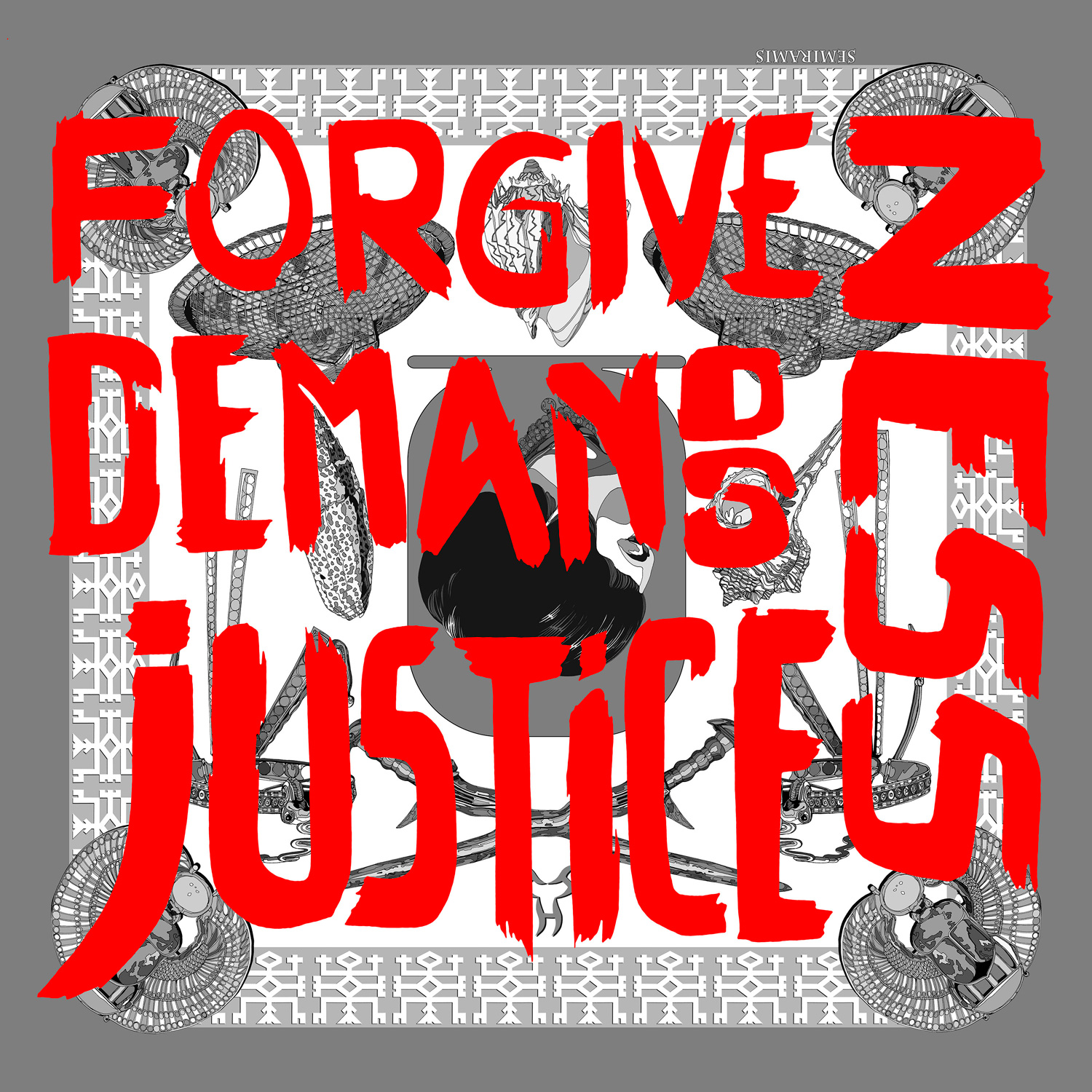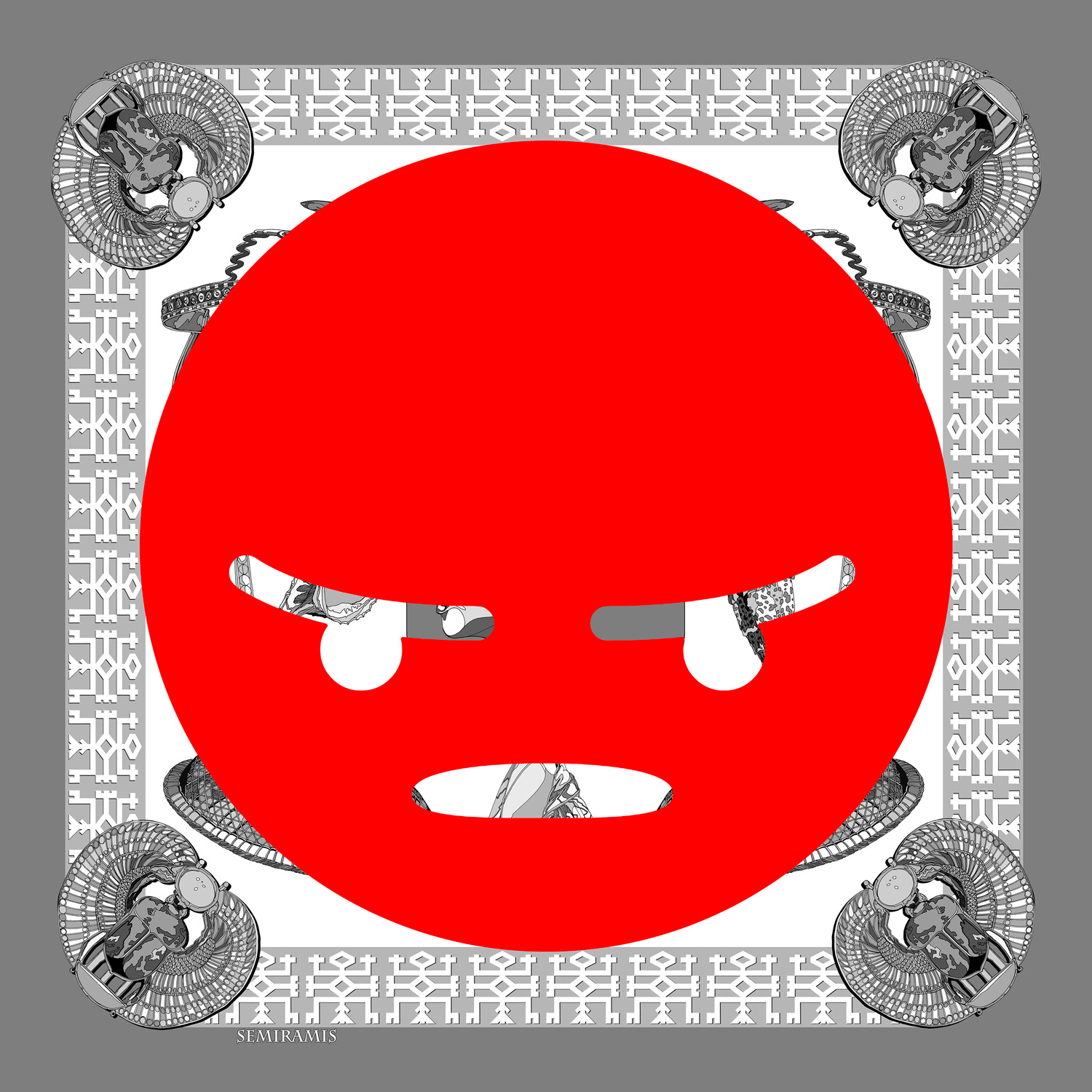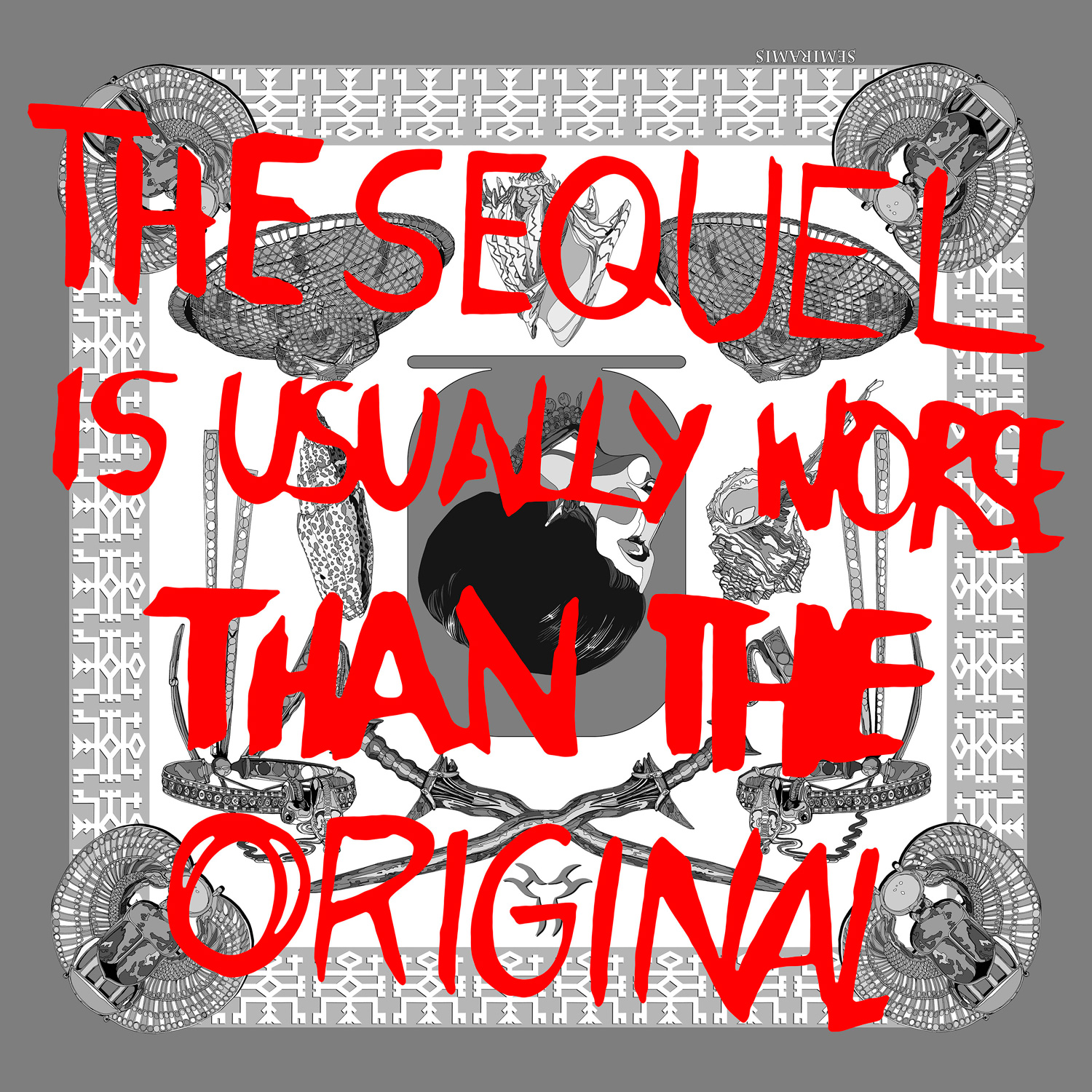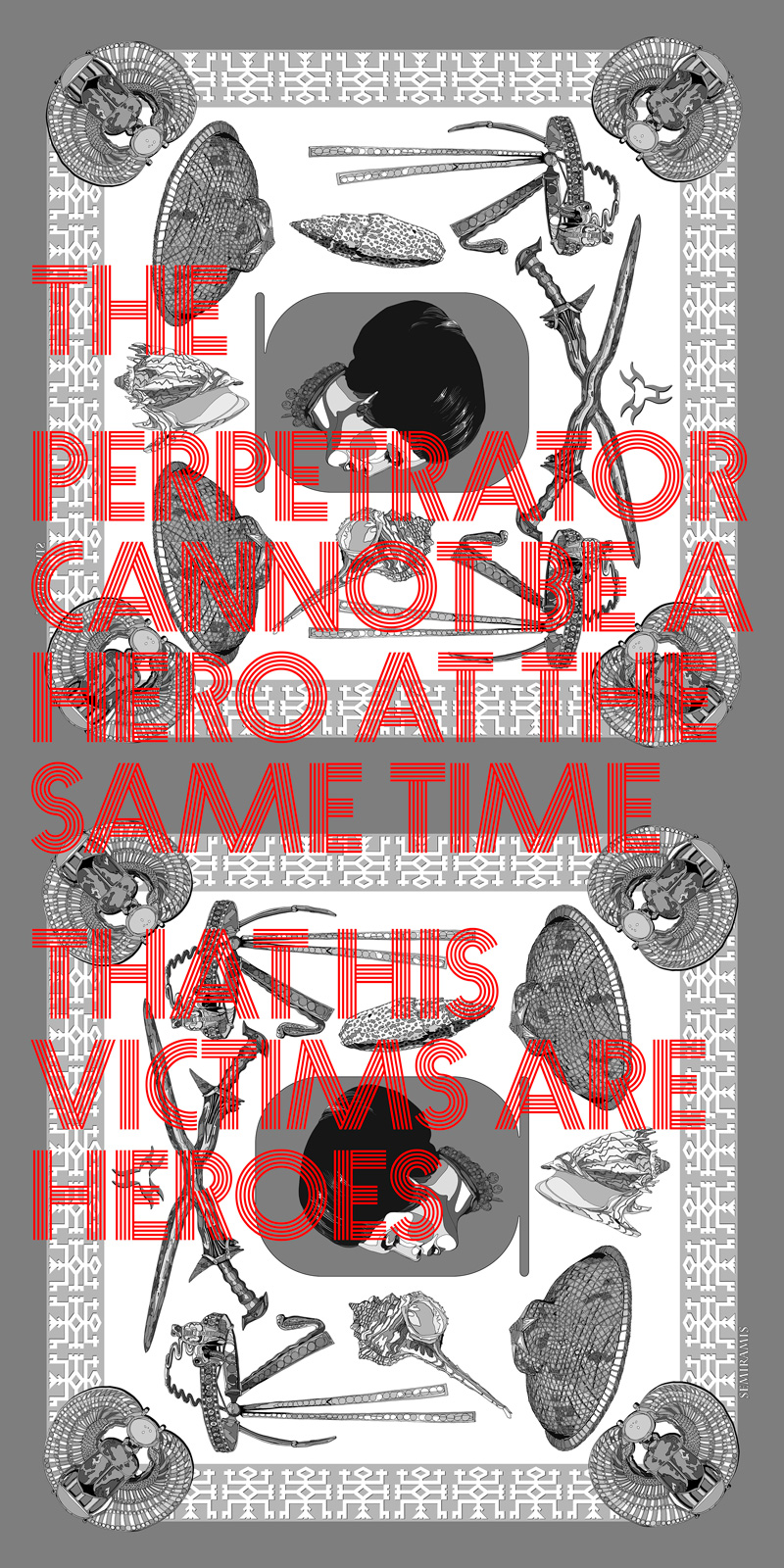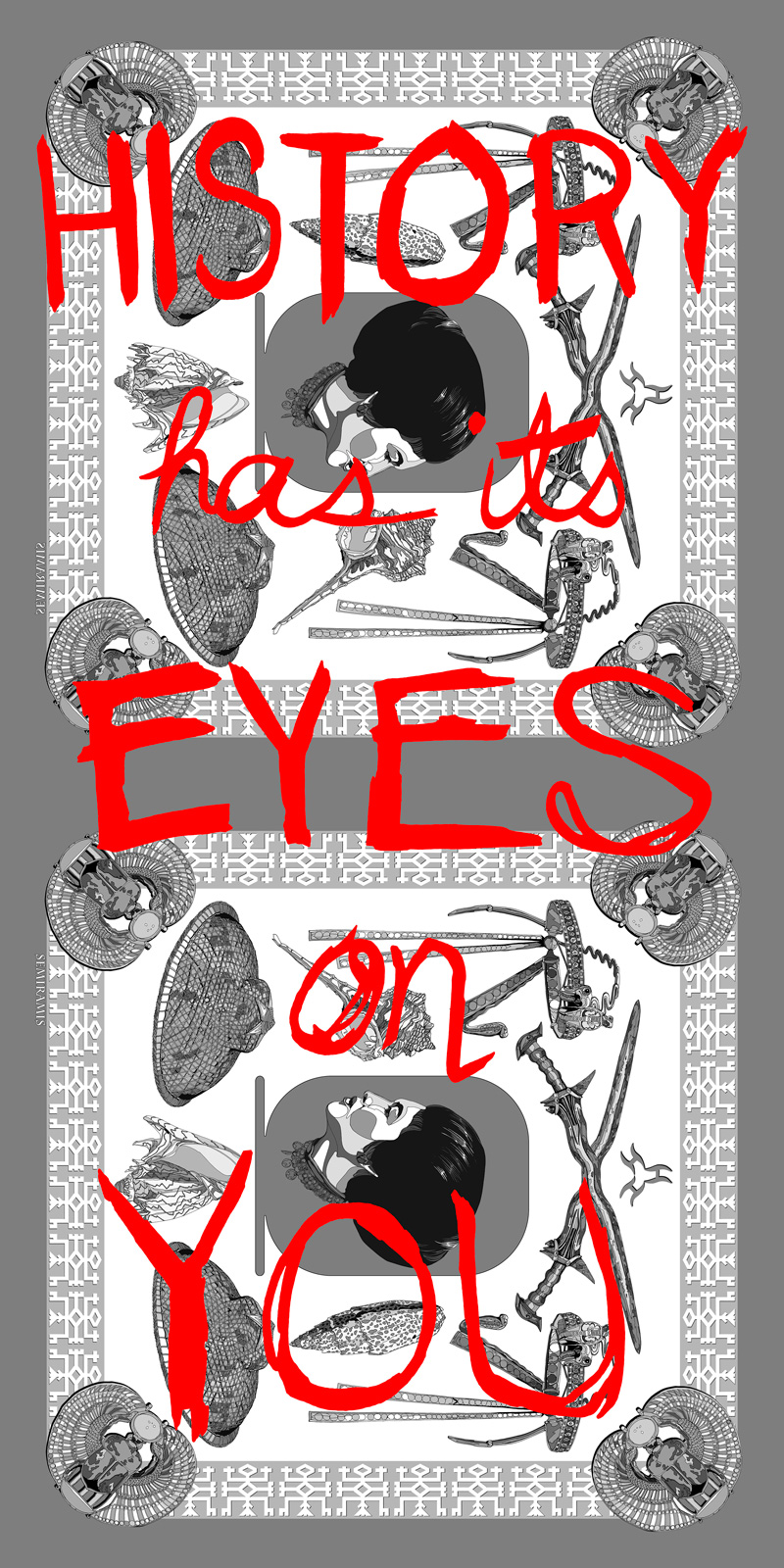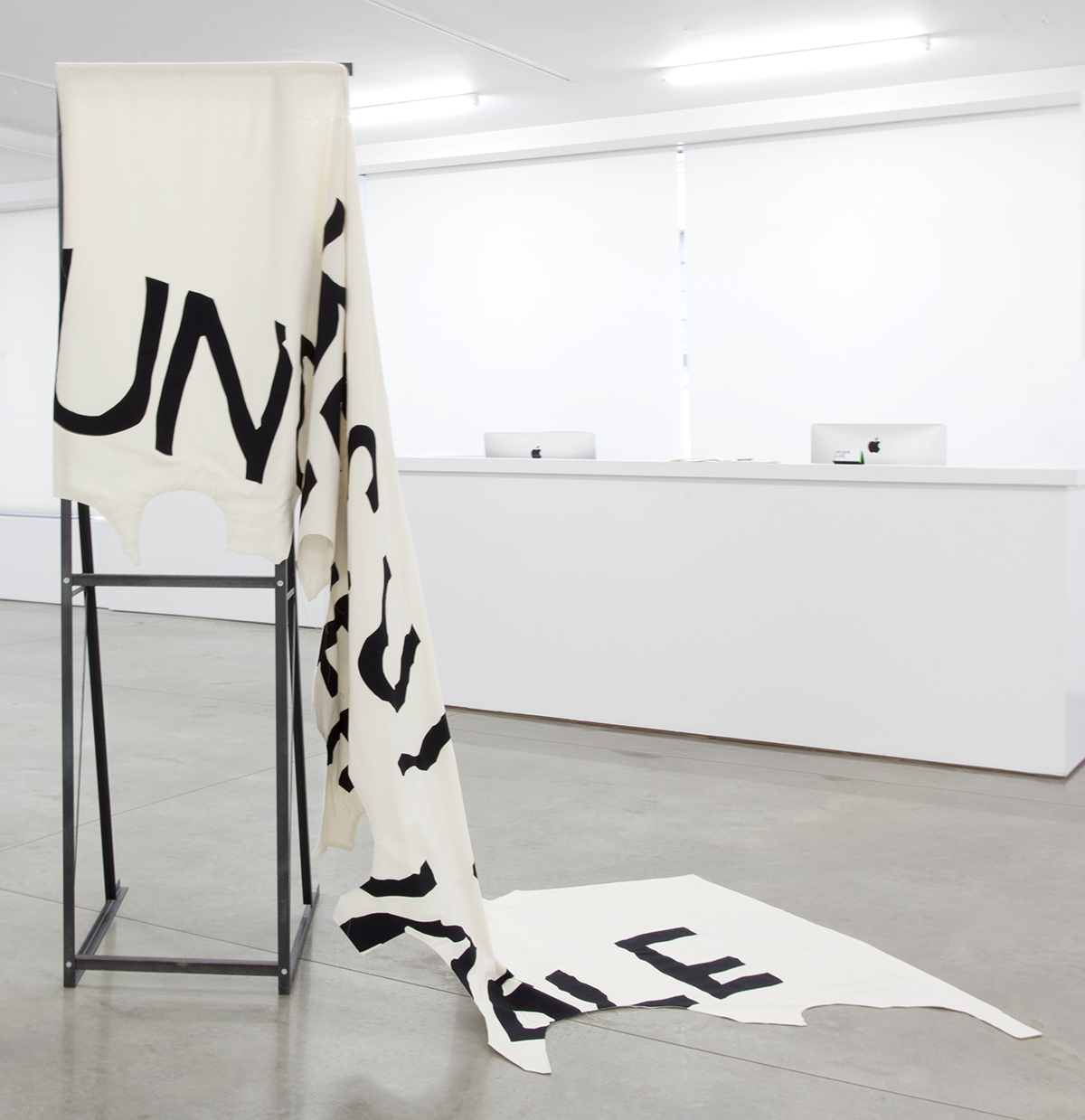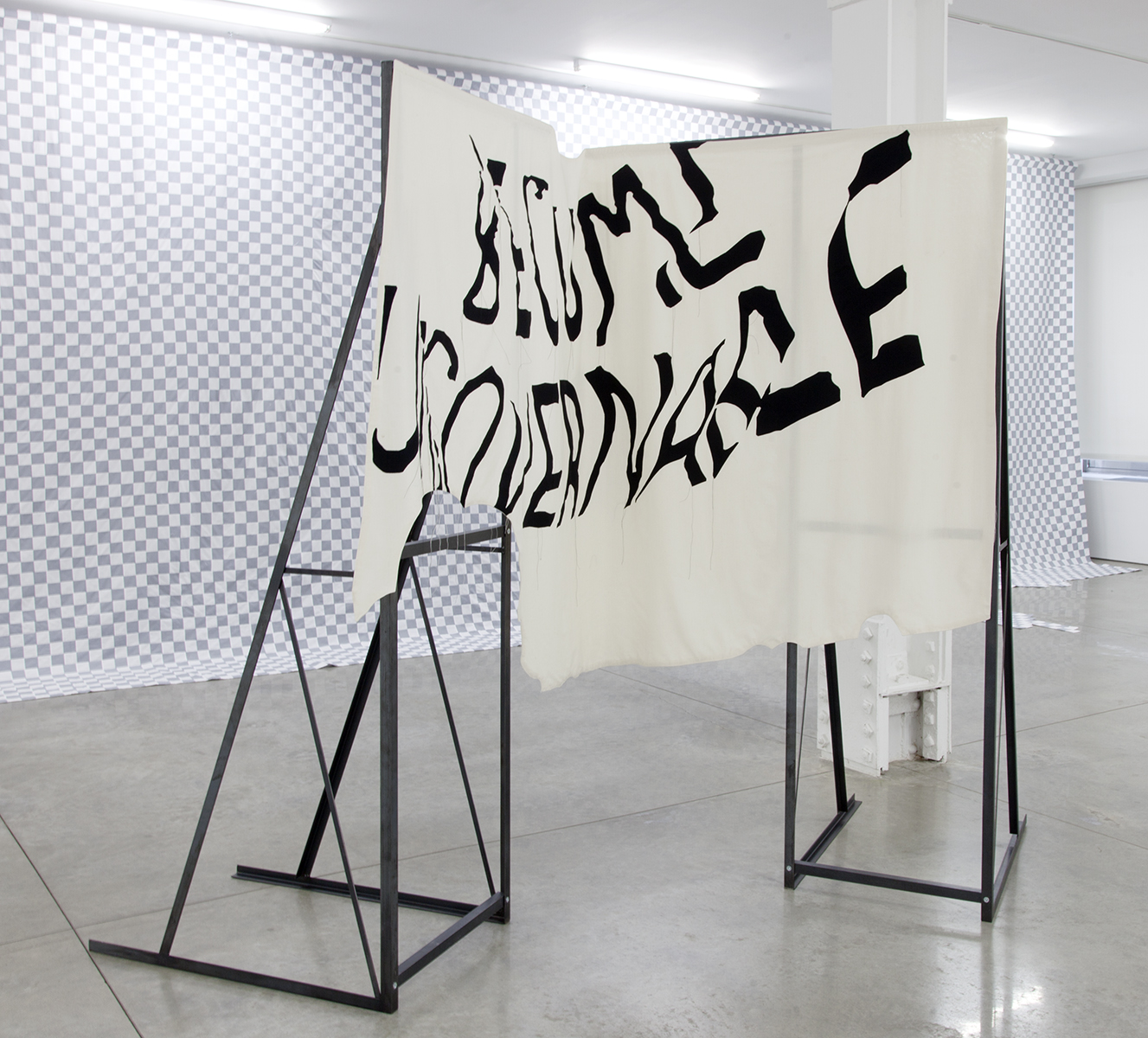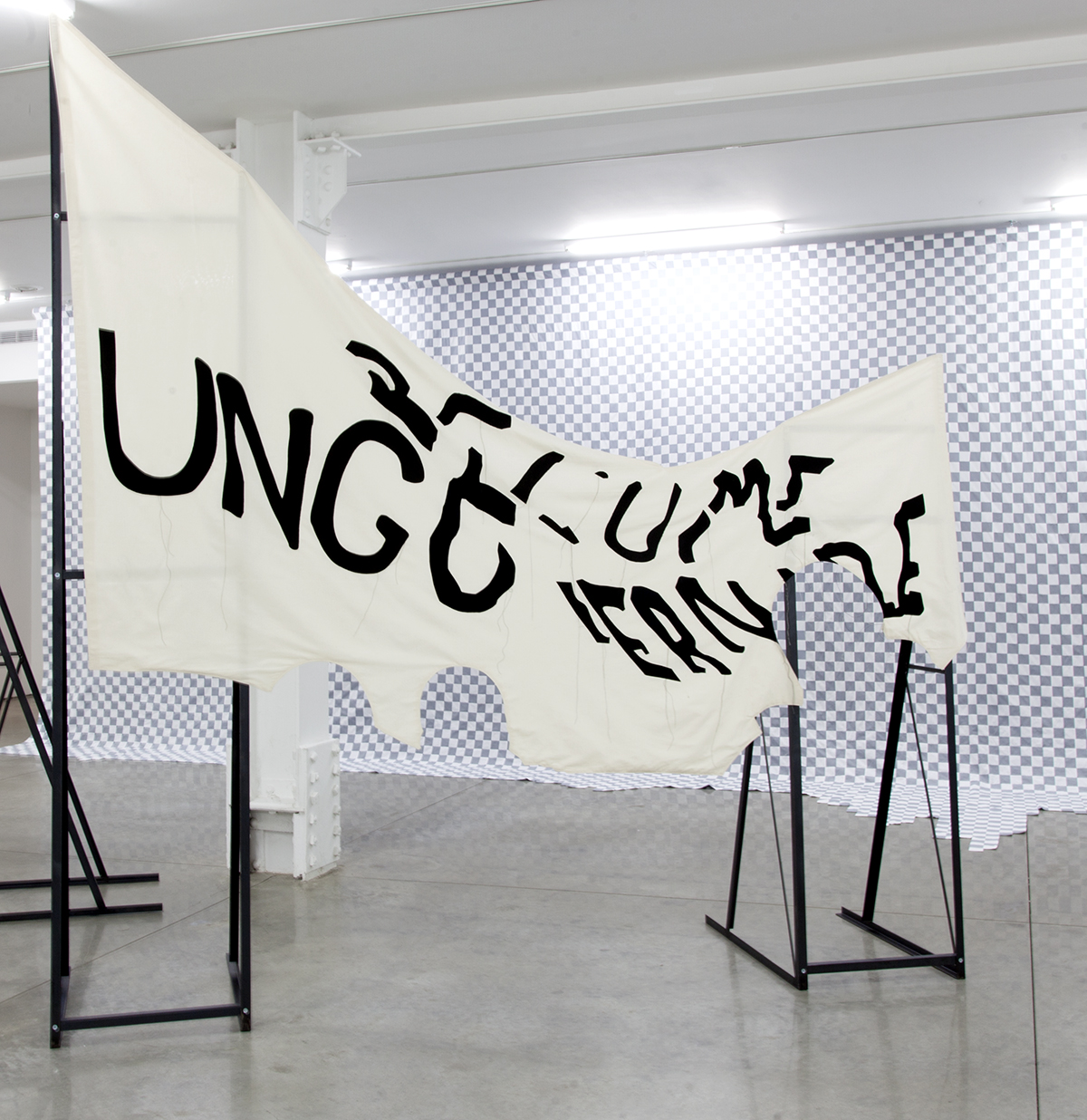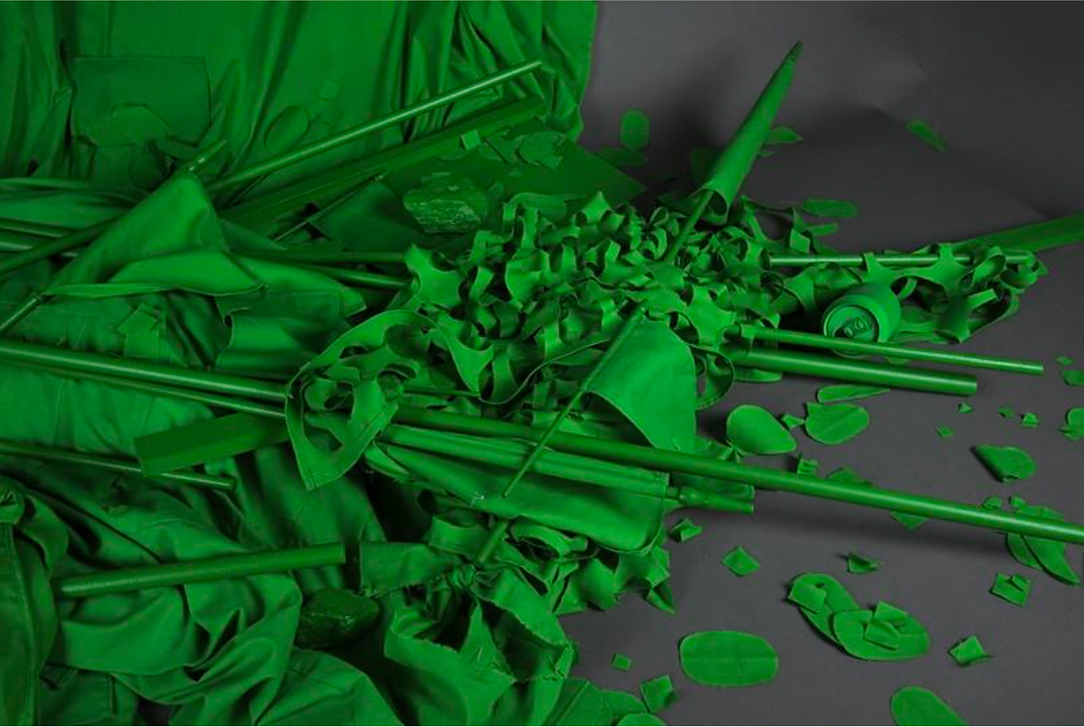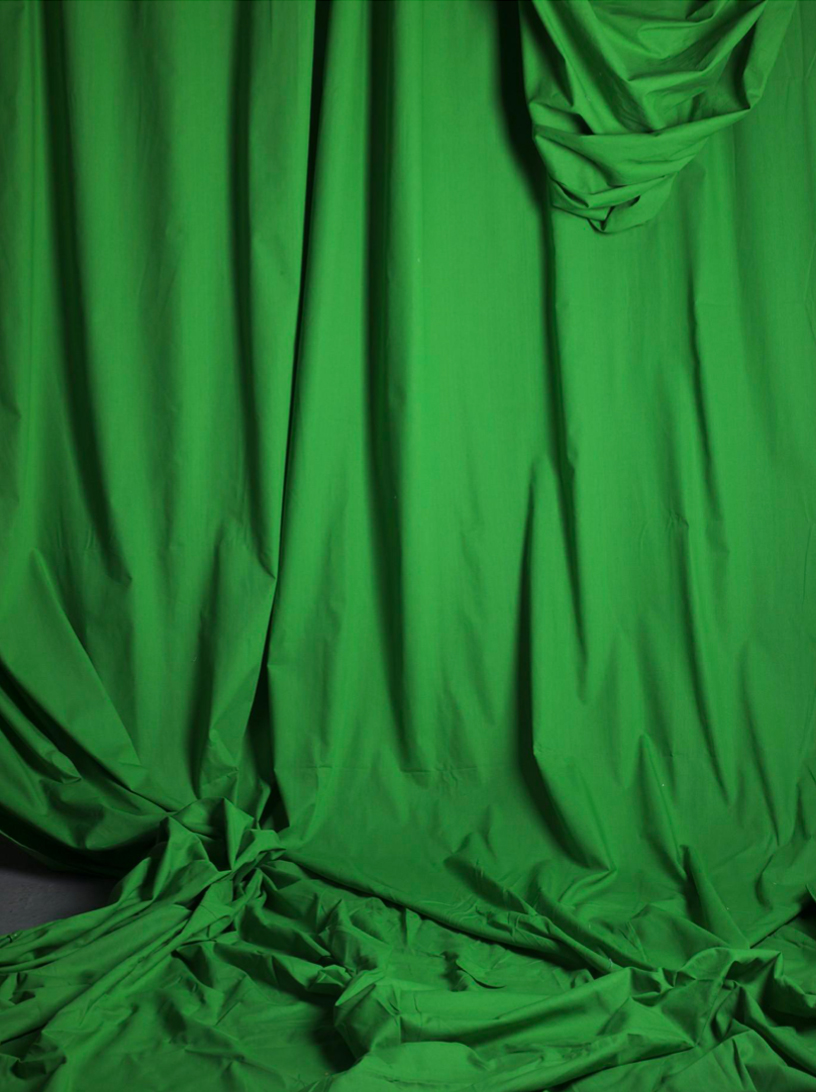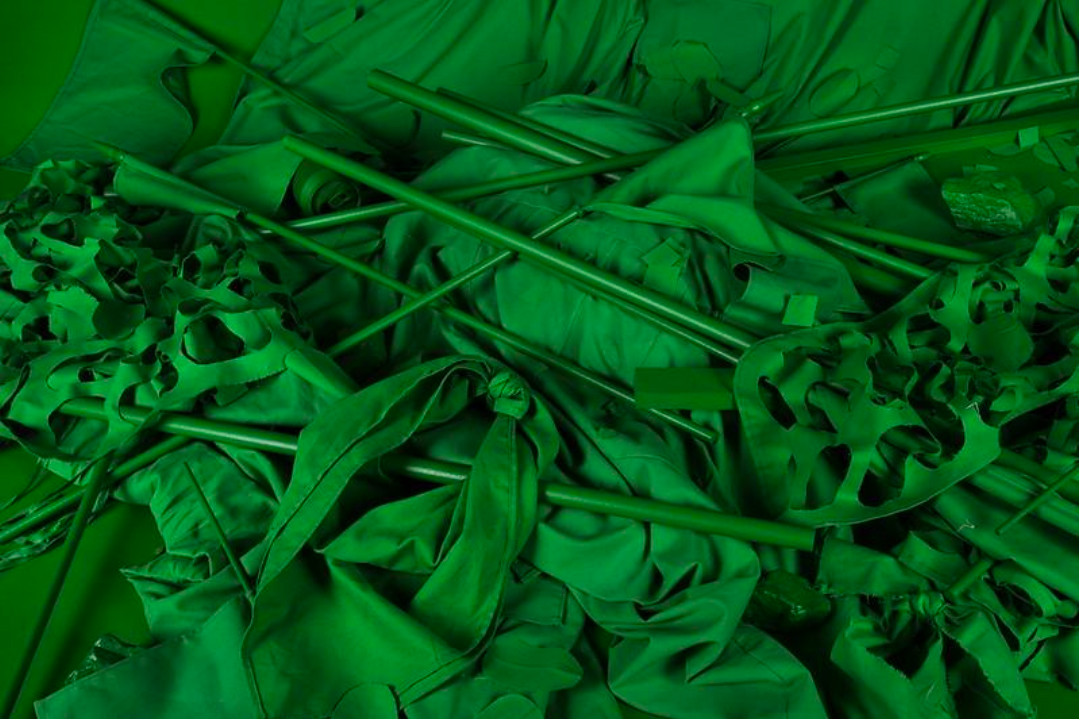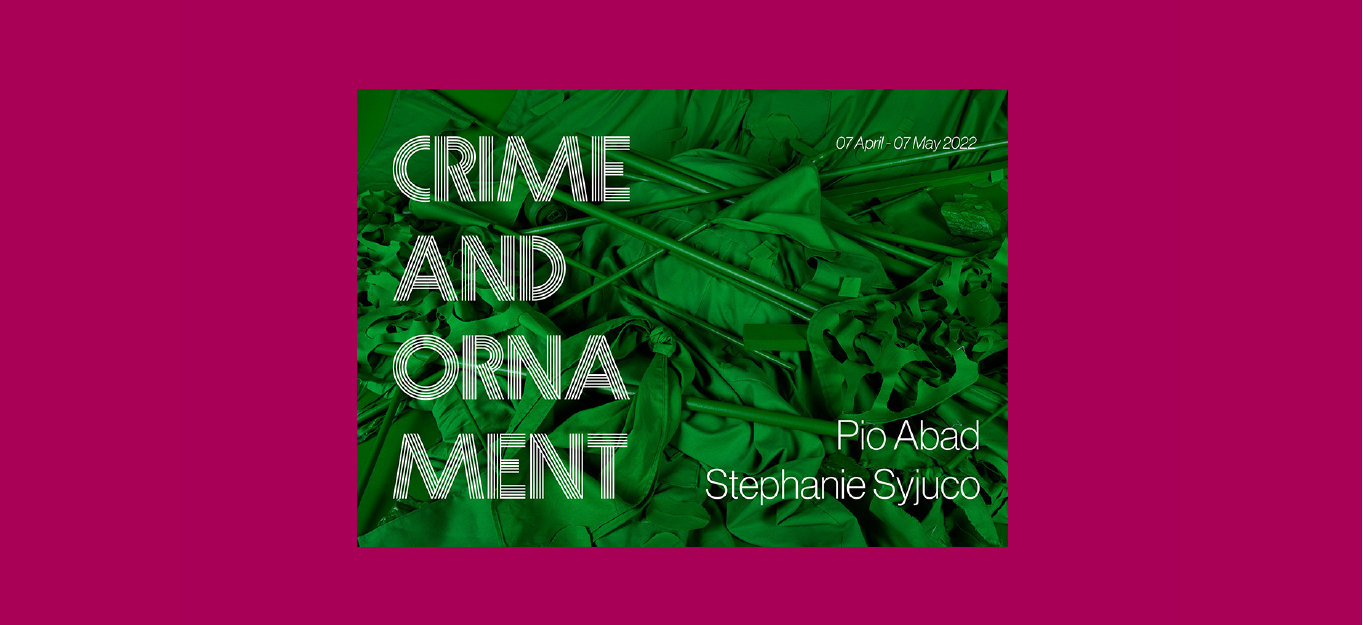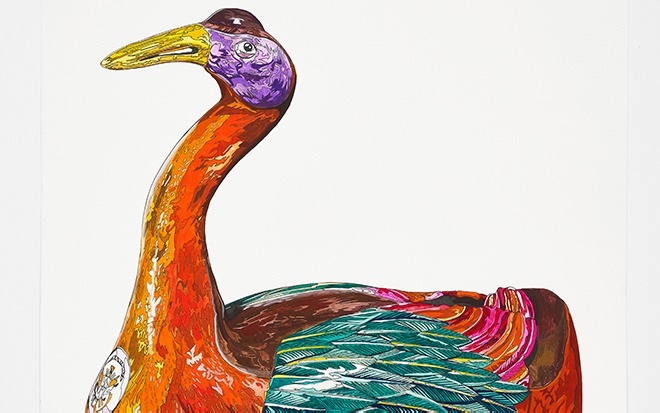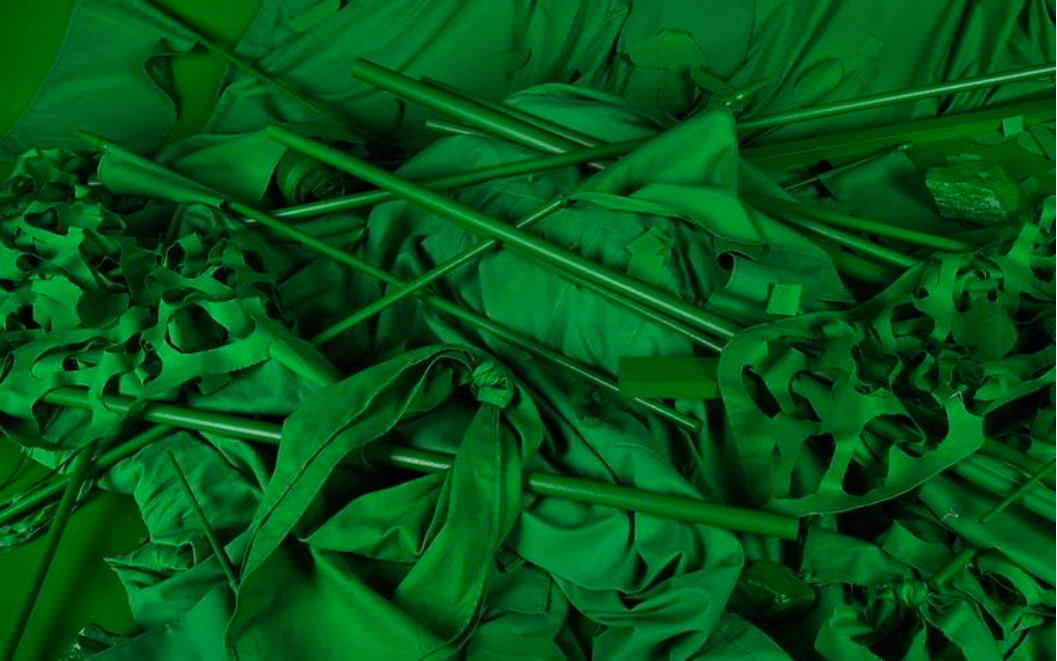
About
The routines we learned in our previous lives are broken
We must forge new language
New patterns
— Aaiún Nin
At the heels of what is arguably one of the most crucial elections in Philippine history, Crime and Ornament sees the dovetailing of the previous works of Pio Abad and Stephanie Syjuco who, in their separate and related practices, have explored the ontology of dissent—of how it ruptures the everyday while at the same time staying irrevocably rooted in it. Through works that range from the photographic to the installative, from the conceptual to the object-based, the artists traffic at the juncture of where the contemporary moment and the future imaginary intersect, probing how the collective may siege, dismantle, and lay waste the infrastructures of power whose long arms extend into the far corners of what is supposed to be the democratized space of the Internet.
Prompted by different historical convulsions and the equivalent lightning-quick protest reactions on the ground (in the case of Syjuco, the bald-faced rearing of white supremacy that achieved monstrous form in the election of Donald Trump as President of the most powerful country in the world; and, in the case of Abad, the grave-digger’s night burial of the remains of the dictator Ferdinand Marcos at the Heroes’ Cemetery, the Libingan ng Bayani), the works are made to confront not only the possibility of the dictator’s son being installed to the highest position of the land, but also the potency of language—both visual and textual—to throw a monkey’s wrench at what seems to be the smooth, high-functioning operation in the manufacture of content (and, by extension, consent) that makes even the most malodorous names in public life as seductive and preferable.
The material components of Crime and Ornament share the same skin as those found in the streets steeped in the climate of outrage and dissent: banners, photographs, textiles—inert objects that, through the artists’ fierce subjectivities, are transformed into supple vehicles of chronicle and commentary. Potentially able to traffic within the discursive spheres of the social and the political, the works’ tangents of meaning bend toward open-endedness, equipped with their bouquets of thrilling signifiers. The artists’ approaches are wildly different: Abad, through the mechanized language of seriality, disassembles, destabilizes, and desecrates Marcosian iconography while Syjuco reconfigures the slogan of resistance through the transformative labor of human hands.
Aside from archiving the afterlife of protests that already came to pass, the works promise the certainty of new ones erupting: the gallery walls painted with the green of chroma key, for instance, theoretically allow for fresh projections of dissent. Even Abad’s quotation of “THE SEQUEL IS USUALLY WORSE THAN THE ORIGINAL,” while alluding to the fascist aspirations of the incumbent, bristles with premonition in the context of the son following the steps of the nefarious father. What is implicit and insistent is human presence: the bodies of those who bore the banner “BE UNGOVERNABLE” delineated as negative space in the work of Syjuco and the possible wearer of the couture effigy of Abad which presents the repetition of the package of Heinz Sandwich Spread, said to be in copious supply in Malacañang as the preferred condiment of Imelda Marcos—the other half of the conjugal dictatorship.
An inversion of the title of the lecture and manifesto, Ornament and Crime, by the German architect Adolf Loos, which was an indictment of decoration in modern life, the exhibition places the condemnation on the criminal travesty of instrumentalizing the democratic features towards self-gain and self-perpetuation, reclaiming, occasionally through craft-based labor, the fervent yearnings for oppositional relationships, revolutionary impulses, and counternarratives from the torrent of the spectacle. The electricity of these yearnings persists not because historical events are interchangeable, but because the perversions of power are constant and never sleep. Signs fashioned by hands, songs issuing forth from the throat, hands lifted in the air—these are radical embodiments that contravene and serve as an antidote to the abstract, disembodied reaches of tyranny.
Crime and Ornament brings to critical visibility the compulsion to disrupt the vectors through which the dominant ideology flows, whose debauched philosophy is all about forced consensus, subjugation, and control. By slashing a seam so that the energies of the periphery—voices, visions, vocabularies—can rush through, the works of Abad and Syjuco affirm that the grand experiment that is democracy is an open threadwork and that the task of meaning-making should never be trusted solely to the bureaus of the state. Achieving surface texture as silk and cotton, printed and stitched, these works circulate in the air and light of our shared milieu, generate fresh topographies of meaning, and join other modes of action so that alternative/alternate versions of the real may be fabricated. As one of Abad’s scarves declares: “History has its eyes on you.”
— Carlomar Arcangel Daoana
Pio Abad (b. 1983, Manila, lives and works in London) began his art studies at the University of the Philippines before receiving a BA from Glasgow School of Art and an MA from the Royal Academy Schools, London. He has recently exhibited at Honolulu Biennial, Hawaii (2019); Gwangju Biennale, South Korea (2018); Art Basel Encounters, Hong Kong (2017); Para Site, Hong Kong (2017); Kadist, Paris (2017); Centre for Contemporary Arts, Glasgow (2016); 4A Centre for Contemporary Asian Art, Sydney (2016); EVA International Biennial, Limerick (2016); e-flux, New York City (2015); Asia Art Archive, Hong Kong (2015); Museum of Contemporary Art and Design Manila (2015); Gasworks, London (2014) and Jorge B. Vargas Museum, Manila (2014).
Pio Abad’s practice is concerned with the social and political signification of things. His work, in a range of media including textiles, drawing, installation and photography, uses strategies of appropriation to mine alternative or repressed historical events, unravel official accounts and draw out threads of complicity between incidents, ideologies and people. Often taking on the form of domestic accessories, Abad’s artworks glide seamlessly between these histories, enacting quasi-fictional combinations with their leftovers.
Stephanie Syjuco (b. 1974 Manila, Philippines; Lives and works in San Francisco, CA) works primarily in sculpture, installation and photography, leveraging open-source systems, shareware logic and flows of capital to create friction between high ideals and everyday materials. Her conceptual craft practice translates digital content and process into physical experience, often with an active public component that invites viewers to participate as producers or distributors. Syjuco’s multimedia social practice ties pedagogy and research to study and highlight the tension between the authentic and the counterfeit across a wide range of media, thus problematizing long-held assumptions about history, race, and labor. “Many of my projects involve public participation to create or build the final work,” Syjuco explains. “I see this collective effort as both a socially and politically engaged process because it encourages people to take agency in creating something together, as opposed to being a passive observer of an artwork.”
Previous projects include starting a global collaboration with crochet crafters to counterfeit high-end consumer goods; presenting a parasitic art counterfeiting event, “COPYSTAND: An Autonomous Manufacturing Zone” at Frieze Projects, London (2009); and “Shadowshop,” an alternative vending outlet embedded at SFMOMA that explored how artists navigate the production, consumption and dissemination of their own work (2010-11). In 2016, Syjuco was commissioned by Art in America to illustrate an article on virtual reality museum tours, for which she produced eight 3D captures of American colonial displays at the de Young Museum and used glitches to emphasize the hidden histories of these artworks and artifacts. — Bio by Ryan Lee Gallery
Works
